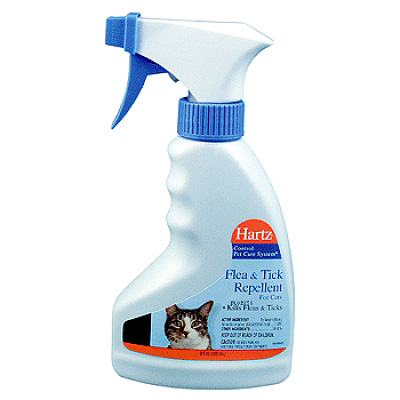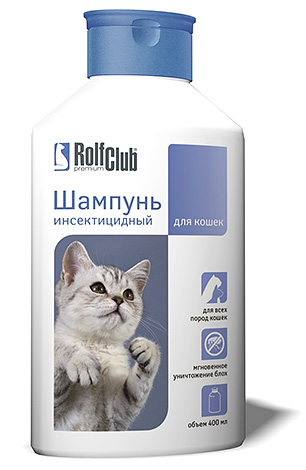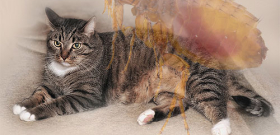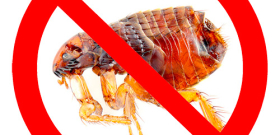
Flea control in cats is generally more difficult than the same process in cats or kittens. The main problem here is the tendency of cats to constant multi-day love affairs, which is especially true for animals living in private houses and apartments on the lower floors.
Such cats catch parasites with enviable regularity and carry them into the house with no less diligence. Therefore, owners of such revelers often have to think about how to get fleas out of a cat. Fortunately, today there are a lot of means for ridding an animal of fleas, and, in fact, removing fleas consists in the correct choice of an effective and safe means, and then in its competent application.
In no case should you treat the presence of fleas in a cat as a self-evident fact and excuse yourself that, they say, it still catches on. Fleas are not only parasites that constantly bite and disturb your pet, but also carriers of many dangerous diseases. And a loving owner will never allow his pet to be at risk of catching a dangerous illness because of the unwillingness to once again treat him for parasites.
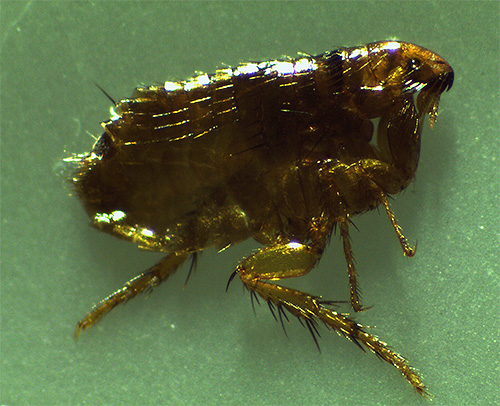
Therefore, if the cat has parasites, they must be dealt with. But before removing fleas from a cat, you need to choose the right remedy that will surely destroy these fleas. Let's start with this...
Flea remedies for cats
All the means that could be used to remove fleas from a cat are divided into several types:
- Drops from fleas on the withers are easy to use, but at the same time quite effective and safe means. Destroy fleas on the animal itself, and also for a certain period (from several days to several weeks) provide protection against re-infection. The most reasonable thing to do with such drops would be to remove fleas from a cat who rarely goes outside and only accidentally becomes infected with fleas. It is important to monitor safety: the principle of action of the drops is based on the penetration of the insecticide into the blood vessels under the skin, and in animals with high sensitivity, allergies can develop because of this. The most famous drops from fleas are Advantage, Frontline, Hartz, Bars and Blochnet.

- Flea sprays are a means for the rapid and total elimination of parasites. For an animal, they are relatively safe, but a little more difficult to use than drops. The scope of their use is heavily infested, but otherwise healthy cats (the presence of a disease in a pet can exacerbate the toxic effect of insecticides on the animal itself). Sprays have a weak residual effect and protect the animal from parasites for only a few days at best. The most famous flea sprays are, for example, Frontline, Hartz, Bolfo.

- Flea shampoos - especially suitable for removing parasites from a cat with very sensitive skin and good fur. Anti-flea shampoos are good for purebred animals, but for their successful use, the cat must at least tolerate bathing. There are many brands of shampoos, Mr. Bruno, Beaphar, Rolf Club, Phytoelita and Doctor Zoo.

- Flea collars are more suitable for protection against reinfection than for removing fleas from a cat.However, with a mild infestation of a pet, wearing a collar is enough for the fleas to leave the animal's coat. This product is not suitable for cats with sensitive skin and show specimens - the collar often wears out the hair on the neck. However, collars are literally necessary for animals that spend most of their time outdoors. Often they are used as an additional means of prevention. Kiltix collars are especially effective, but also expensive - they provide protection for up to six months. Hartz and Beaphar are more accessible, but also run out of steam faster.
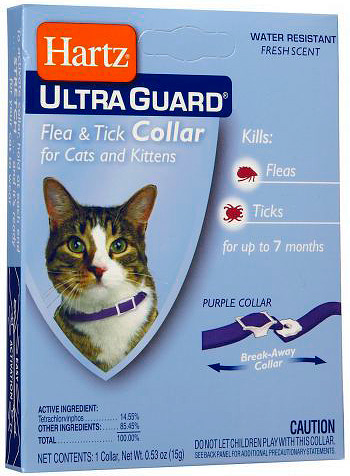
There are also special flea powders, but they are rarely used for cats. Such preparations require laborious application and are usually not as effective as, for example, drops or sprays.
On a note
You should be prepared for the fact that before the complete removal of fleas, you will have to buy several funds. After all, before removing fleas from a cat, it is impossible to predict whether he will be allergic to the remedy or whether the fleas will be resistant to a particular insecticide in drops or spray. But most often, getting rid of parasites from the animal occurs quickly and does not require additional efforts.
Folk remedies for fleas, for the most part, are not effective enough and can only be used as additional drugs that enhance the effect of the main drug.
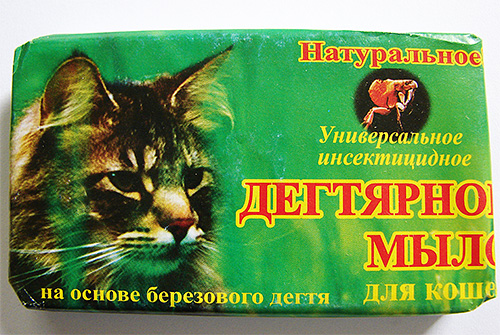
The procedure for removing fleas from a cat
Remove fleas from a cat should be strictly according to the instructions for a particular drug. Before the procedure itself, it is advisable to comb the animal, wash its bed, and carefully treat the place where the pet is resting with insecticides and wash it.
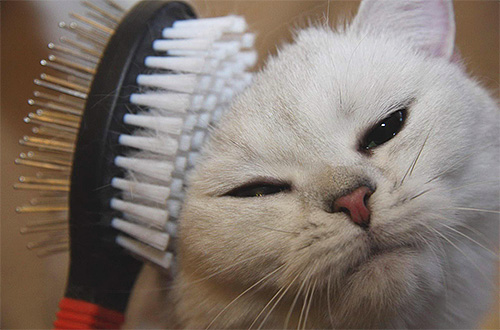
Drops from fleas are applied to the skin at the withers and rubbed with fingers until completely absorbed. Some drops need to be smeared in several places along the spine. It is important to do this where the cat will not be able to lick the preparation from the fur.
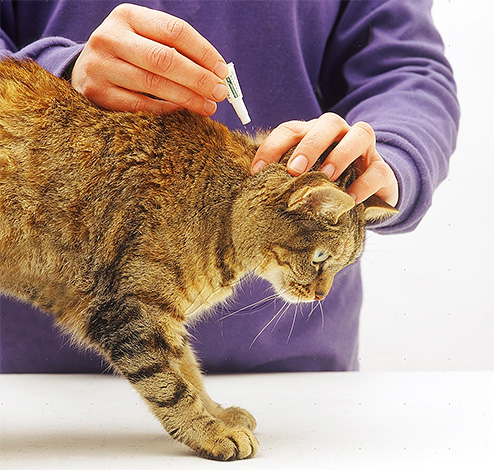
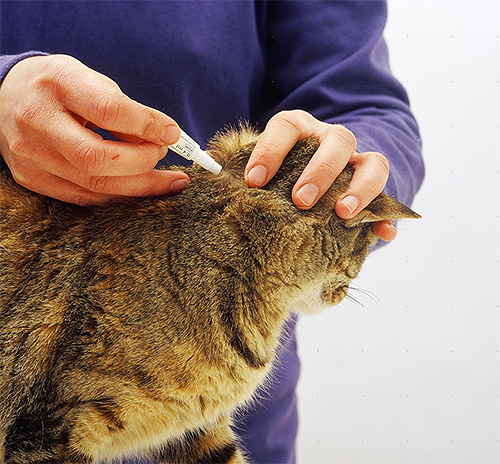
When treating with a spray, the cat needs to constantly push the hair apart and spray the preparation directly onto the skin. Depending on the instructions in the instructions, the animal should not be bathed and allowed to wash for 0.5 - 3 hours after treatment. Then it is desirable to bathe him under running water.
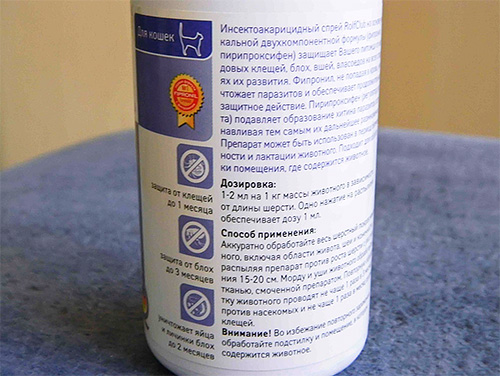
With flea shampoo, the cat bathes in the same way as with any other. It is advisable to wash the animal's hair with a simple shampoo after washing off the insecticidal shampoo.
After using any product on a cat, it is advisable to put on a flea collar to protect it from re-infection. If it is impossible for an animal to wear a collar all the time, it should be worn at least while walking on the street (and also, for example, during the same love affairs).
Safety and Precautions for Flea Removal
Most modern flea remedies for cats and cats are quite safe and do not require special precautions when using them. Nonetheless:
- when using drops on the withers, it should be controlled so that the cat does not lick them off;
- the first few days of wearing a flea collar must be monitored so that the cat does not have wounds on the neck - the insecticide from the collar can cause allergies and skin irritation;
- when using the spray, the eyes and mouth of the animal should be protected, but the head should be treated in the same way as other parts of the body.
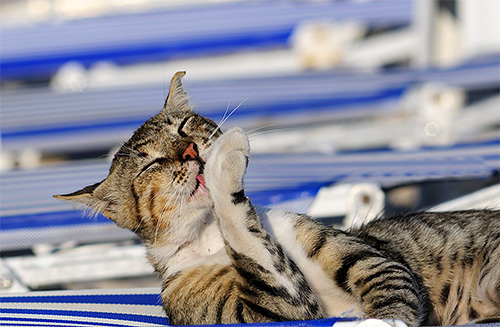
When using anti-flea drugs, you constantly need to check if the cat has any adverse reactions - nausea, vomiting, shortness of breath, fever. If such signs are found, it must be shown to the veterinarian.
On a note
There is no need to worry about a slight increase in salivation in the animal after the start of the use of sprays. Most of them contain alcohol, and saliva is a normal reaction of the animal to its ingestion.
After successfully removing fleas from a cat, the whole house should be treated for these parasites: if insects remain under carpets, in crevices or behind baseboards, they will begin to bite the cat again as soon as the drug ceases to act on them.
Prevention of flea infestation
And finally, you should always remember that it is better to prevent a cat from getting fleas than to fight them in the future. To do this, at the beginning of the spring season, a flea collar is put on an animal that constantly walks on the street, and bundles of wormwood or tansy, or special sections with the smell of lavender (for example, you can take moth sections) are placed under its bed in the house. It is advisable to regularly comb the pet and inspect its coat: if fleas appear even in small numbers, they will be noticeable, and it will be possible to start fighting them even before a serious infection.
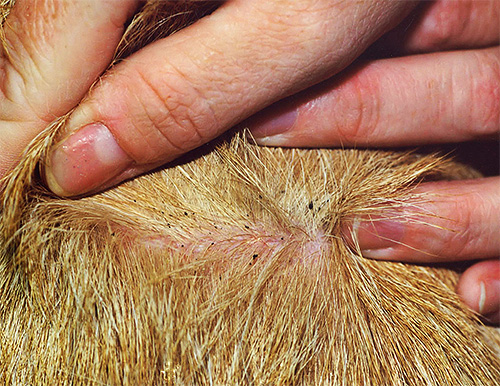
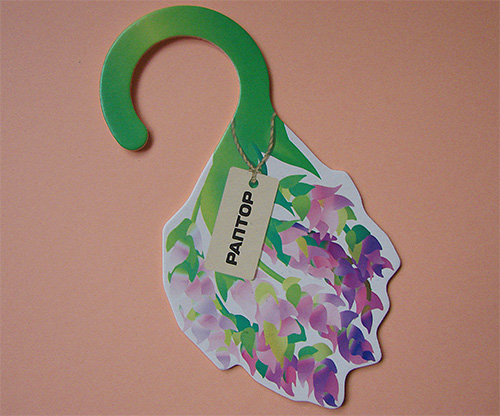
It is very important not to allow the cat to communicate with street homeless animals. But that's why he and the cat, to hooligan half his life, and rest the remaining half. Therefore, each owner of such a mustachioed robber needs to be prepared to be able to quickly and surely remove fleas from his cat at the first detection of parasites.
Useful video: how to properly treat a cat from fleas at home


